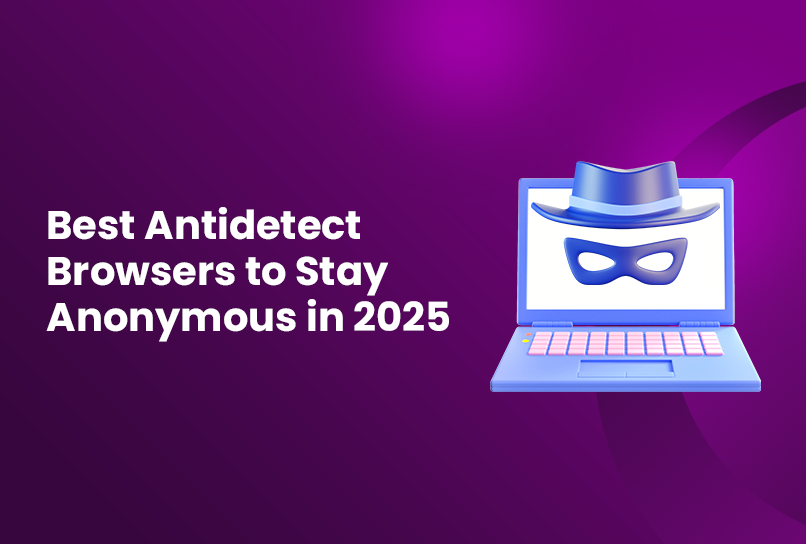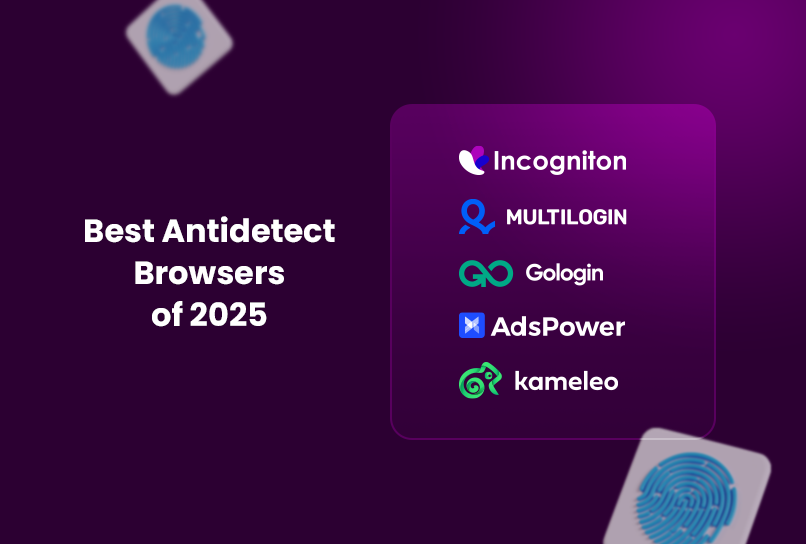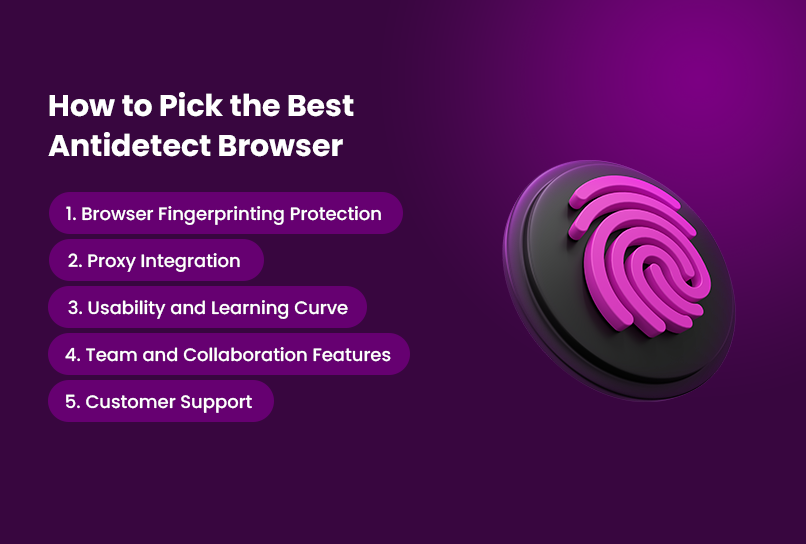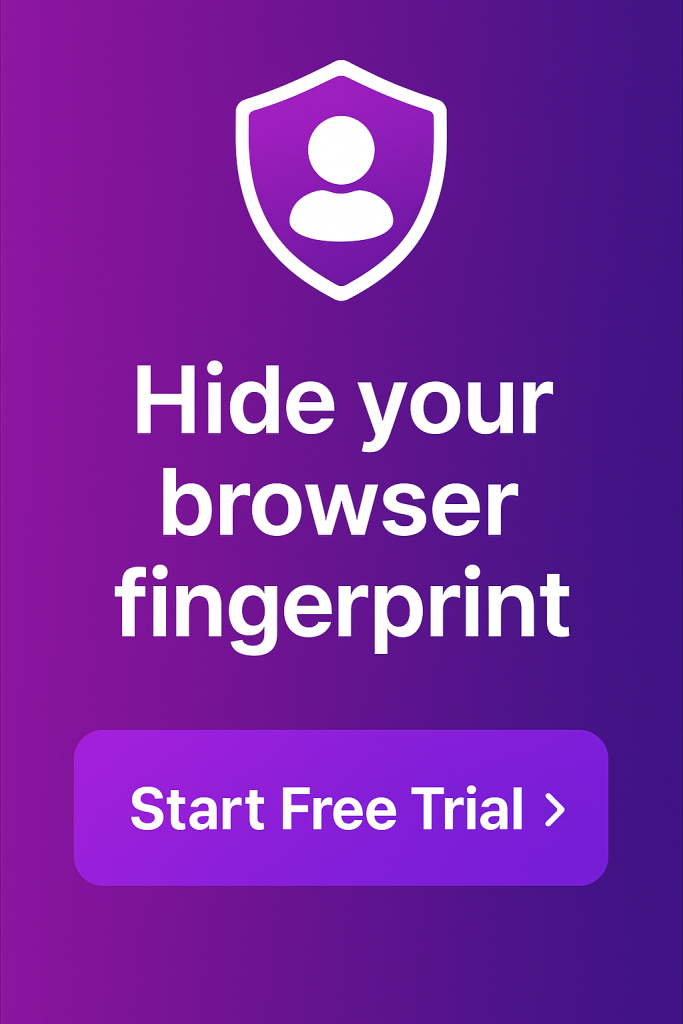As AI systems grow increasingly data-hungry and tracking technologies such as browser fingerprinting become more advanced, traditional tools—including Incognito mode and VPNs—no longer offer adequate privacy.
Social media managers, Affiliate marketers, Web automation developers, and privacy-conscious users can all benefit from a reliable antidetect browser to remain truly undetected online.
These specialized browsers prevent tracking via fingerprinting by spoofing your browser fingerprint, therefore making it easier to manage multiple accounts without triggering bans.
In this article, we’ll explore the best antidetect browsers of 2025, including both free and paid options. We’ll also cover how to choose the right one and how to test its effectiveness.
Without further ado, let’s get into it.
Best Antidetect Browsers of 2025
Below, we’ve put together a ranked list of the top anti-detect browsers of 2025, taking into account their features, security capabilities, user experience, and overall pricing structure:
1. Incogniton
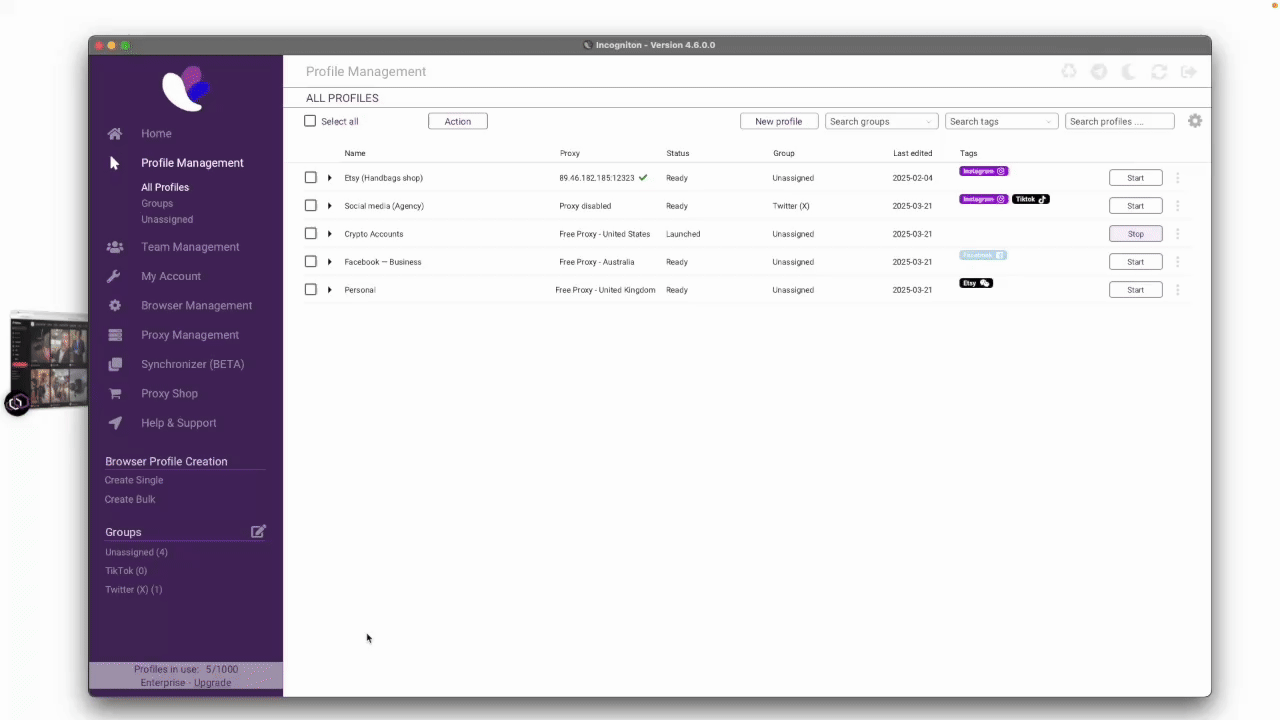
Best for: Ad managers and social media marketers managing multiple accounts.
Key Features:
- Advanced fingerprint control and profile isolation.
- Easy-to-use interface for managing multiple identities.
- Built-in proxy integration for extra anonymity.
- Affordable pricing with a free tier for testing.
Why Choose Incogniton?
Launched in 2020, Incogniton quickly earned a reputation among affiliate marketers and ad buyers for its ease of use and reliability. It’s particularly favored for its clean UI, responsive updates, and strong customer support—making it a solid option for professionals who want a no-nonsense, scalable antidetect solution.
2. Multilogin
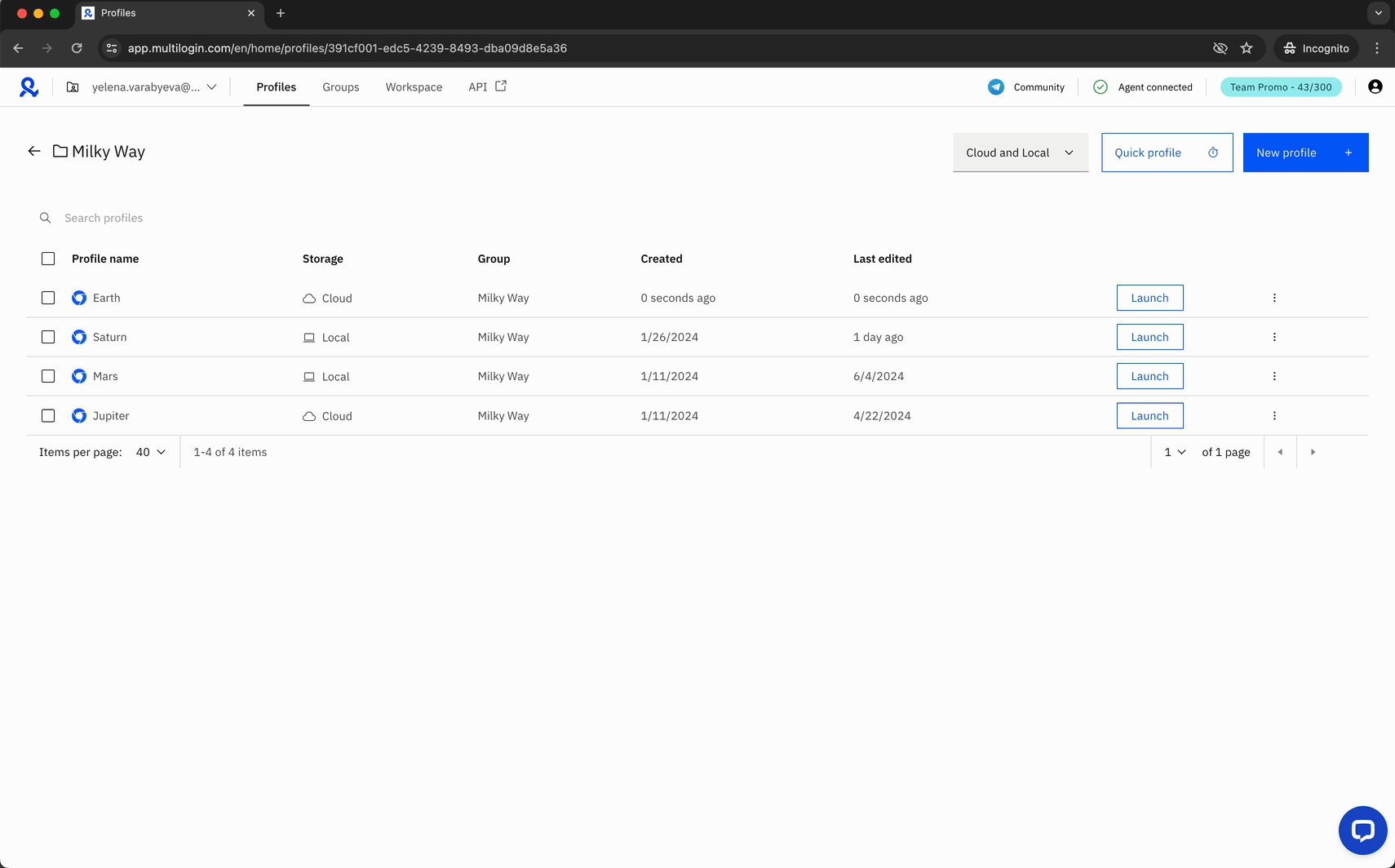
Best for: Agencies and large teams needing high-level anonymity.
Key Features:
- Powerful browser fingerprinting protection.
- Team collaboration features for sharing profiles securely.
- Supports Chrome and Firefox-based environments.
- Higher price point but excellent enterprise features.
Why Choose Multilogin?
Multilogin has long been considered the gold standard in the antidetect space. Since its debut in 2015, it’s been the go-to solution for enterprise users and digital agencies needing advanced customization and stability. Its mature tech stack and deep feature set continue to lead the industry in 2025.
3. GoLogin

Best for: Individuals and small businesses needing an affordable antidetect browser.
Key Features:
- Cloud-based profiles for access from anywhere.
- Realistic fingerprint masking.
- Supports Chrome extensions.
- Offers a free trial and budget-friendly plans.
Why Choose GoLogin?
Originally emerging as a low-cost alternative to Multilogin, GoLogin now stands on its own with a loyal user base. Its reputation centres on being beginner-friendly yet surprisingly powerful. Thanks to its cloud syncing and reliable fingerprint rotation, it’s become a staple for freelancers and small ops needing flexibility without a steep learning curve.
4. Adspower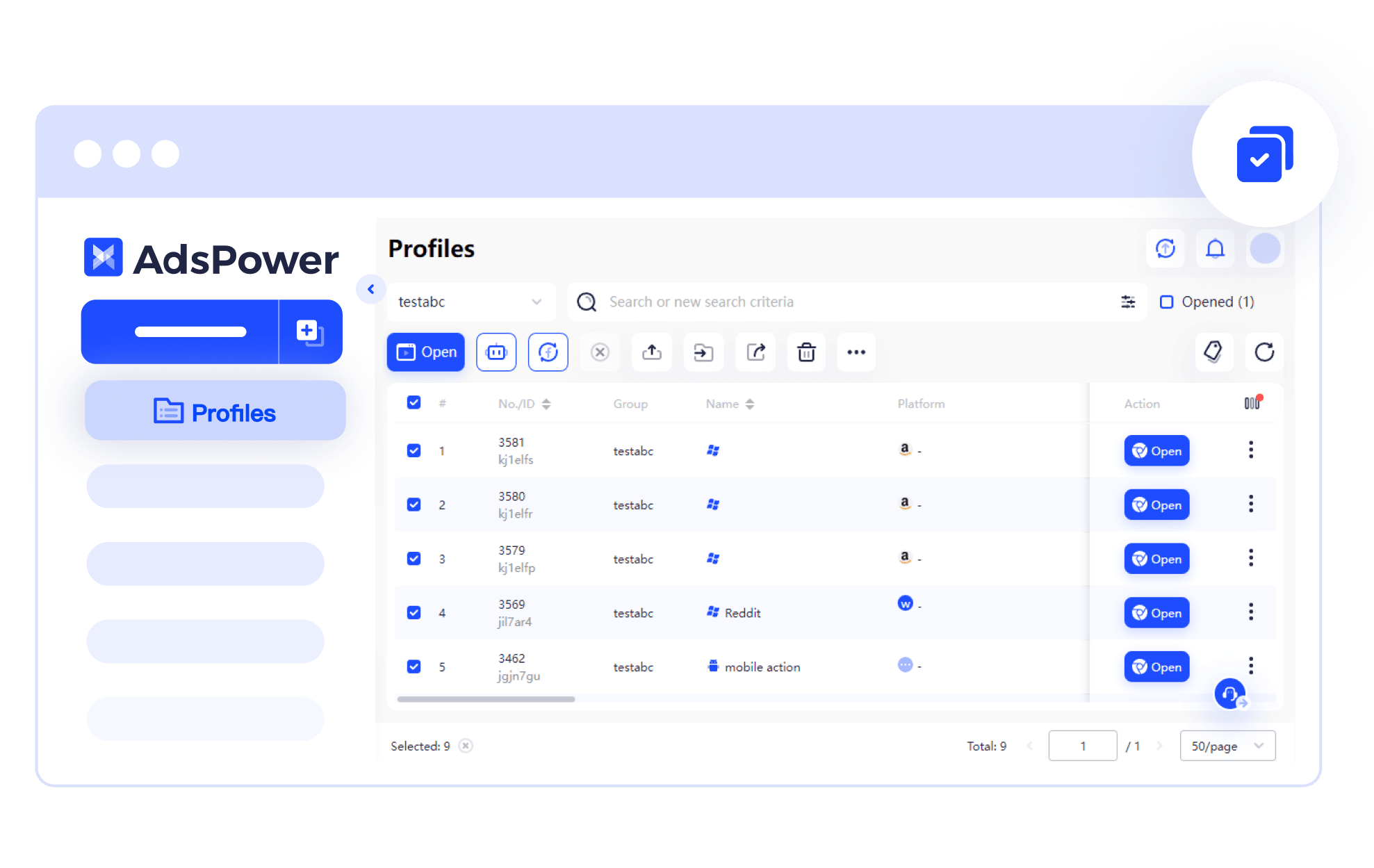
Best for: E-commerce sellers and social media automation.
Key Features:
- Local browser profile management
- Customizable browser fingerprints to prevent detection.
- Integrated proxy configuration for enhanced anonymity.
- Automation tools and team collaboration features.
Why Choose Adspower?
AdsPower launched in 2019 and quickly carved a niche for itself among e-commerce operators and affiliate marketers in Asia before expanding to global markets. Its development team’s continuous development and commitment to user feedback have helped solidify its position in the antidetect browser market.
5. Kameleo

Best for: Users needing a mobile antidetect browser.
Key Features:
- Supports mobile device fingerprinting.
- Works with Android and Windows.
- Advanced fingerprint editing features.
- Steeper learning curve but excellent flexibility.
Why Choose Kameleo?
Kameleo stands out for pioneering mobile fingerprinting—something few antidetect browsers have dared to tackle. While its desktop features are strong, it shines for users who need to run operations on phones or emulate mobile behaviour. Its flexible profile editor and commitment to continuous development make it a favourite among mobile-first growth hackers.
Antidetect Browser Comparison Table (2025)
| Browser | Best For | Pricing (Monthly) | Standout Features |
| Incogniton | Ad managers & social media teams | Free plan / Paid plans from $19 | Fingerprint customization, built-in proxy integration, Bulk operation & automation |
| Multilogin | Agencies & large-scale marketers | Paid plans from €29 (~$32) | Enterprise features, powerful anti-fingerprinting |
| GoLogin | Individuals & small businesses | Free trial / Paid plans from $24 | Cloud-based profiles, Chrome extensions support |
| Adspower | E-commerce automation & power users | Free plan / Paid plans from $9 |
Advanced fingerprint customization, Bulk operations & automation |
| Kameleo | Mobile-focused users | Paid plans from €59 (~$64) | Mobile fingerprinting, Android support, f |
Best Free Antidetect Browser
Generally, paid plans of antidetect browsers offer the most advanced workflow tools and features, but the free plans are also as good when it comes to core functionality: Fingerprint masking. Here are some of the best free anti-detect browsers available:
1. Incogniton (Free Plan)
Incogniton offers a limited free plan that allows users to create multiple browser profiles with fingerprint management. While the free version has restrictions on the number of profiles, it still provides strong fingerprint masking and is ideal for trying out the antidetect browsing without commitment.
2. Mozilla Firefox with Manual Tweaks
Although not a dedicated anti-detect browser, Firefox can be modified with privacy-focused extensions (like CanvasBlocker and User-Agent Switcher) to improve anonymity. However, it lacks the robust fingerprinting protection found in paid alternatives.
3. GoLogin (Free Trial)
GoLogin provides a 7-day free trial that includes access to its cloud-based profile management and fingerprint protection. While not a permanent free solution, it’s a good way to test its features before upgrading to a paid plan.
How to Pick the Best Antidetect Browser
Choosing the right antidetect browser can mean the difference between staying under the radar or getting flagged and banned. While most claim to offer privacy, not all antidetect browsers are built equally. Here’s what to focus on when making your pick:
1. Browser Fingerprinting Protection
This is non-negotiable. Your browser fingerprint includes everything from screen resolution and installed fonts to hardware specs and time zones. Choose a browser that not only masks but lets you customize these variables per profile. Look for options with dynamic fingerprint generation and realistic emulation of popular devices and OS environments.
2. Proxy Integration
Your fingerprint might be clean, but if your IP leaks, you’re still exposed. The best antidetect browsers allow seamless proxy integration per profile—residential and mobile proxies being the most effective. Bonus if it supports rotating proxies and detects when your proxy fails.
3. Usability and Learning Curve
You don’t want to spend hours figuring out how to launch a profile. Some browsers cater to enterprise users with tech-heavy interfaces, while others offer user-friendly dashboards. Consider your team size, technical ability, and whether you need automation tools or browser APIs like Puppeteer or Selenium.
4. Team and Collaboration Features
If you’re part of an agency or manage accounts with others, choose a browser with permission controls, shared access, and activity logging. That way, you avoid sharing credentials over spreadsheets or insecure apps.
5. Customer Support
Reliable customer support is crucial, especially for professional users. Check if the provider offers live chat, email, or a knowledge base.
How to Test If Your Antidetect Browser Actually Works
Even with the best antidetect browser, you should always verify that your setup is working correctly. Here’s how:
1. Test for Browser Fingerprinting
Websites use advanced fingerprinting techniques to track users. Test your browser’s effectiveness using:
- Fingerprint Identity checker– Confirm that you have a different visit ID and history on your Antidetect browser.
- BrowserLeaks – Tests various tracking methods, including canvas fingerprinting and WebGL.
2. Check for IP Leaks
Even if your browser fingerprint is hidden, an exposed IP can still get you flagged. Use ipleak.net to verify that your IP matches your proxy and there are no leaks.
3. Simulate Real-World Usage
Log into different accounts and test behaviour across platforms like Google, Meta, and e-commerce sites. If you’re getting CAPTCHA prompts or verification requests too frequently, your setup might not be working. You should adjust your settings or try a better proxy.
How to Stay Anonymous While Using Anti-detect Browsers
Using an antidetect browser is a critical first step, but it’s only part of the equation. If your setup is sloppy, even the best software won’t save you. True anonymity requires smart configuration and disciplined behavior.
1. Assign a Unique Proxy to Each Profile
Every browser profile should have its own dedicated IP address. Avoid Datacenter proxies unless you have no other option—they’re cheap but easy to detect. Residential or mobile proxies are harder to flag and make your traffic look more human.
2. Never Reuse Profiles Across Accounts
Reusing profiles is a fast way to get linked and banned. Treat each persona (account) as an entirely separate identity. That means different proxies, fingerprints, languages, time zones, and even screen resolutions.
3. Avoid Cross-Contamination
Keep personal and professional activities separate. Don’t check your Gmail in the same browser you use for ad campaigns or client work. Better yet, run your antidetect browser inside a virtual machine or sandboxed environment.
4. Keep Fingerprints Consistent, Not Fancy
You don’t need a wild mix of settings to confuse trackers—just a believable one. If your user-agent data says “Mac,” don’t spoof a screen size or font stack that screams “Windows.” Mismatched fingerprints are more suspicious than reused ones.
5. Ditch Unnecessary Plugins and Extensions
Extensions can leak data or create inconsistencies. Only use what you absolutely need—and avoid ad blockers or password managers that can trigger red flags.
6. Stick to Natural Behavior Patterns
Bots get caught when they behave like bots. Don’t rely on automation features. Click around, scroll through feeds, and wait between actions. Whatever you use anti-detect browsers for, make it look and feel human.
In short, what we are saying is the tool won’t save you if your habits betray you. Anonymity comes from the full setup, not just the browser. Every layer of your stack — from proxy to profile to process — must support your anonymity.
Conclusion
Online platforms are tightening restrictions, and tracking methods are only getting smarter. If you’re managing multiple accounts, running ads, scraping data, or just trying to stay private, a good antidetect browser is no longer optional—it’s essential.
Free browsers provide effective fingerprint spoofing, as the core technology is typically intact. However, as I have reiterated throughout this piece, professionals should consider paid antidetect browsers and high-quality proxies for the scalability, reliability, and operational control required in more demanding environments.
Choose wisely, test regularly, and always stay one step ahead of detection.
FREQUENTLY ASKED QUESTIONS
Do I need a proxy with an antidetect browser?
Yes, using a proxy with an antidetect browser is recommended to fully mask your identity. A browser alone hides your fingerprint, but if your IP address stays the same, websites can still track you. That’s why most anti-detect browsers offer proxy integrations and even direct proxy services.
What is the best anti-tracking browser?
For general privacy and anti-tracking, browsers like Brave, Firefox with privacy extensions, and Tor offer strong protection. However, these don’t provide multi-accounting capabilities like antidetect browsers do. If you need both privacy and multi-account management, antidetect browsers are the better choice.
Should I use a free antidetect browser?
Yes, but while top anti-detect browsers’ free tiers offer solid fingerprint-spoofing capabilities for individuals, advanced features like team collaboration and API access make the experience worthwhile for professional use.
If you are a multi-account manager, affiliate marketer, web scraper, or if you intend to collaborate with your team, investing in a paid option is recommended. As a rule of thumb, always check what the free tier offers before jumping on any completely free software.
Are anti-detect browsers legal?
Yes. The software itself is legal. However, what you do with it matters. Many marketers, researchers, and businesses use them for privacy and security issues. However, using them to violate platform rules or laws or for fraud can get you in trouble.
Are browsers like Brave or Firefox good alternatives?
They’re great for general privacy, but they lack multi-accounting features. Antidetect browsers are purpose-built for anonymity at scale.
Are anti-detect browsers completely anonymous?
No. They help mask your fingerprint, but full anonymity requires proper internet browsing hygiene: staying off sketchy plug-ins or extensions, good password management, and the like.
Anti-Detect Browser for Multi-Account Management
Manage unlimited virtual profiles for easy multi-account management. Safe and anonymous. Ideal for teams and individuals. Download and try for free now!
